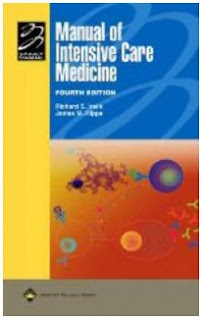Early Detection and Management of Mental Disorders
Early Detection and Management of Mental Disorders
Edited by:
Mario Maj
Juan Jose´ Lo´pez-Ibor
Norman Sartorius
Mitsumoto Sato
Ahmed Okasha
Details
Hardcover: 316 pages
Publisher: Wiley; 1 edition (January 14, 2005)
Language: English
ISBN-10: 0470010835
ISBN-13: 978-0470010839
Product Description
From the Back Cover
Contents:
List of Contributors
Preface
Early Detection and Management of Mental Disorders
Edited by:
Mario Maj
Juan Jose´ Lo´pez-Ibor
Norman Sartorius
Mitsumoto Sato
Ahmed Okasha
Details
Hardcover: 316 pages
Publisher: Wiley; 1 edition (January 14, 2005)
Language: English
ISBN-10: 0470010835
ISBN-13: 978-0470010839
Product Description
From the Back Cover
The WHO has found that mental disorders rank in the top 10 of leading causes of disability in the world, creating a significant social, emotional and economic burden for young people, their families and society. Early detection of these potentially disabling disorders and appropriate treatment at the time of initial onset can reduce patient discomfort, duration and severity of illness and the costs associated with misdiagnosis.
Early Detection and Management of Mental Disorders is an unbiased and reliable reference point for mental health professionals to properly assess patients and treat disorders as early as possible.
The mental disorders and topics addressed in this volume include:
- Schizophrenia
- Bipolar Disorder
- Eating Disorders
- Depression
- Anxiety Disorders
- Alzheimer's Disease
- Attention-Deficit/Hyperactivity Disorder (ADHD)
- Children of parents with mental disorders
- Diagnosis of mental disorders in children
Early detection and management of a mental disorder implies the availability of a thorough description of the prodromal manifestations of the disorder, the existence of assessment and screening instruments with a satisfactory sensitivity and specificity, the feasibility of screening programmes in the general population or in vulnerable groups, the successful engagement of a significant proportion of the subjects found to be at high risk, and the availability of validated programmes of intervention focused on the early phases of the disorder. All these elements are currently being developed for most of the above-mentioned mental disorders, and are already part of clinical practice in several contexts for some of them (notably schizophrenia).
Contents:
List of Contributors
Preface
- Chapter 1 Prodromal Symptoms and Early Detection of Schizophrenia
- Chapter 2 The Management of Early Psychosis
- Chapter 3 Children of Persons with Schizophrenia: An Overview of Empirical Research
- Chapter 4 Detection and Management of Bipolar Disorder in Children and Adolescents
- Chapter 5 Detecting the Risk for Affective Spectrum Disorders in the Children of Bipolar Parents
- Chapter 6 The ‘‘Difficult’’ Child: Main Underlying Syndromes and Differential Diagnosis
- Chapter 7 Precursors, Prodromes and Early Detection of Eating Disorders
- Chapter 8 Precursors, Early Detection and Prevention of Anxiety Disorders
- Chapter 9 Early Recognition and Management of Depression in Primary Care
- Chapter 10 The Prodromes and Early Detection of Alzheimer’s Disease
Download




































